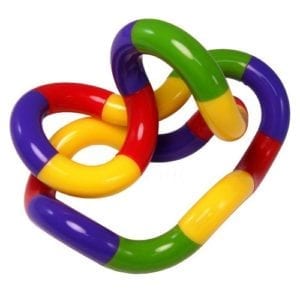ADHD and the use of Concentrators in School |
 One of the main areas that teachers will identify in working with children with ADHD is that they are easily distractible and that they will distract other children.
One of the main areas that teachers will identify in working with children with ADHD is that they are easily distractible and that they will distract other children.
Although teachers will differ in their views regarding the reasons for the distractibility many of them will agree that children with ADHD become easily bored with classroom tasks and as a result look for other things to do or other children to interact with.
However most agree that if a child needs to fiddle the best strategy is to give them something to fiddle with. One teacher that I met recently told me “I’m forever taking things of him sometimes 10 items a lesson………..he taps his pencil, grinds his eraser into the desk…… I take them all away and a minute later he is playing with his watch strap”.
This story illustrates a crucial point which is that children with ADHD often need something to manipulate in those busy hands to help them to listen and focus, particularly in seated situations.
As a result, Concentrators have been found to be highly effective tools which allow students to remain seated and focussed during classroom activities.
Some of the reasons why Concentrators are often so successful are as follows:
- Being able to be twisted and manipulated into a variety of shapes provides a highly effective noise free manipulation tool.
- They can also be broken up into parts and put back together to provide an additional problem solving activity
- They far less likely than equivalent hand held manipulation tools such as Stress balls to be thrown about or be used as missiles.
The use of Concentrators has time and time again allowed learners to keep on task and is a proactive way of helping children with ADHD and similar symptoms to keep their hands off other items that may otherwise result in teacher re-direction.
Though the use of the concentrator should be adapted to individual children some basic rules of use should be established at the outset.
These could include the following:
- The concentrator should be issued at the start of the lesson and collected in at the end.
- The concentrator is not a toy and the student needs to be advised that misuse of this equipment could result in a more restricted use of other privileges such as Computer time.
- Concentrators should be used during times of the day that have a high listening component such as reading to the whole class, class meetings and whole school assemblies
By itself the concentrator will not solve all the issues of ADHD but in combination with a structured and flexible teacher it can make a significant difference to the quality of learning of both the specific student and their peers.